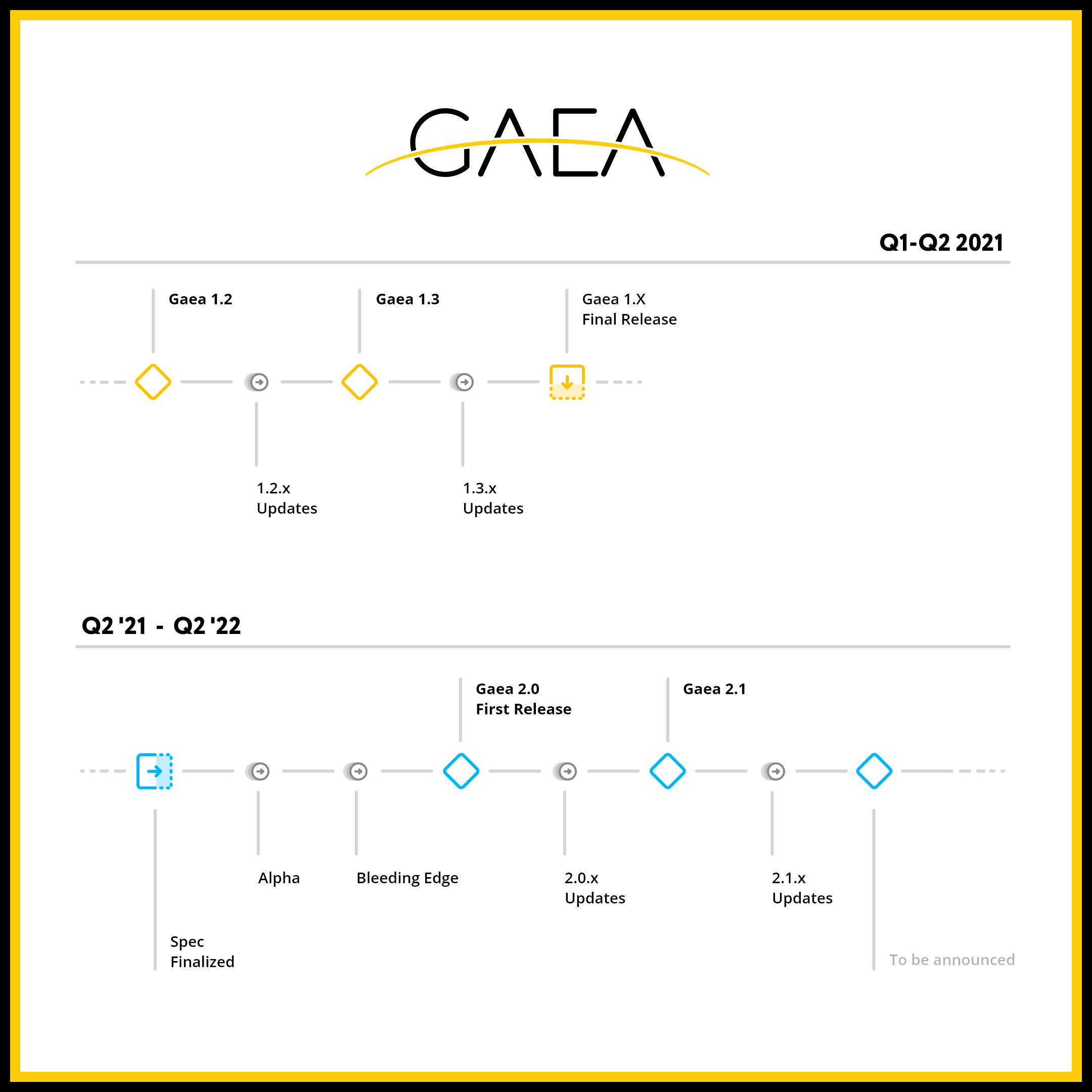
Gaea Roadmap
Updated on April 3, 2021. The roadmap is subject to change without notice.
As we re-establish our plans following the several gaps and delays from 2020 due to circumstances beyond our control, here is the updated roadmap that shows our vision going forward.
Summary
- Gaea 1.3 is coming, and it will mark the end of the Gaea 1 lifecycle.
- We have begun work on Gaea 2.0, Bleeding Edge access in mid/late 2021.
- Gaea 2.0 will have a staggered release pace.
Gaea 1.0 final release
The next step in Gaea 1.0's lifecycle is the 1.3 update which brings tiled builds, OBJ-to-terrain converter, super-high-res build capability (256k x 256k), and Arboreal nodes.
We intend to have Gaea 1.3 production-ready by the middle of 2021.
Shortly after that, Gaea 1.3.x will enter Long-Term Support (or LTS). This means we will stop adding any new features and freeze development apart from bug fixes and security updates.
Gaea 2.0
The next major version of Gaea has been in the works since early 2020. We are now close to finalizing the new version's specifications (a matter of weeks, as of this writing).
Gaea 2 will be bigger than Gaea 1. And Gaea 2 will have a different pace of releases.
Update cycle
- Minor updates (2.1, 2.2, 2.3, etc.) will be more focused and contain fewer features.
- But there will be more minor updates. As of right now, we anticipate 2.1 to 2.20.
- There will be 2-3 updates between each minor update, focused on maintenance and fixes.
- Minor updates will be spaced out around 1-2 months, sometimes more.
Licensing
Gaea licensing will remain the same - perpetual license with free minor upgrades and a discounted upgraded path from 1.0 to 2.0.
The Big Rebuild
Gaea 2 is being rewritten from the ground up. Gaea 2 will feature a more future-friendly engine, where GPU and CPU processing can live side by side. (No, we're not headed to complete GPU processing - more on that later) The new "platform" style approach to Gaea 2 will provide a detailed SDK.
The main advantage of such an SDK are:
- Integrate Gaea into other applications more easily.
- Power users and 3rd party vendors can extend Gaea with plugins.
- New subsystems for scripting, prefab/macros, scripted components.
- A very high level of stability in all situations.
- Reduce the risk of instability when new features are added regularly.
The new engine will also allow distributed builds across server farms or VM instances on the cloud. Integration with other applications will be easier and more performant as well. For example, we will directly transfer data via memory from Gaea to the host app (such as Houdini) rather than dealing with physical files.
As we move to full time development of Gaea 2.0, expect more "Dev Diary" threads on the forums and on the blog.
